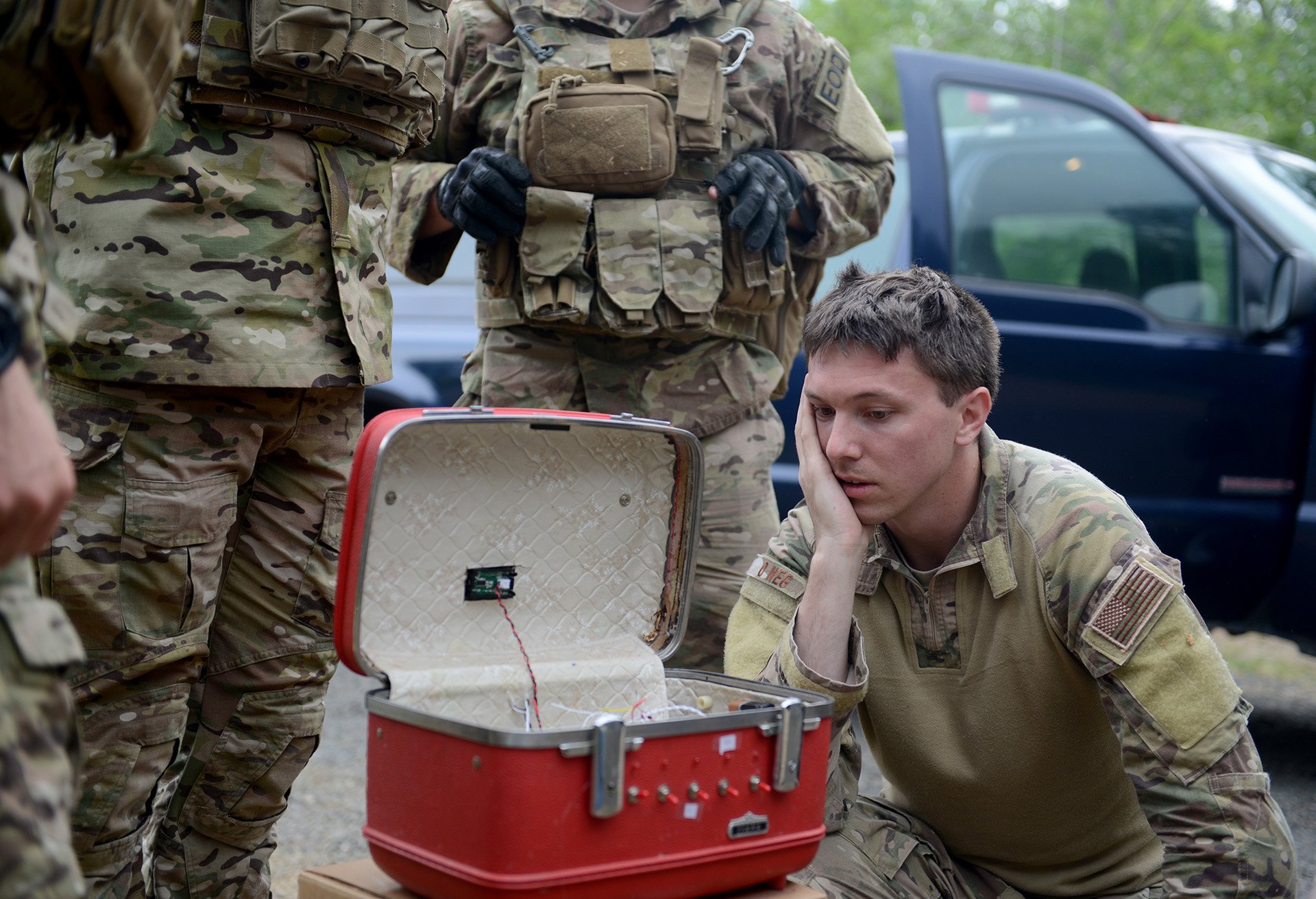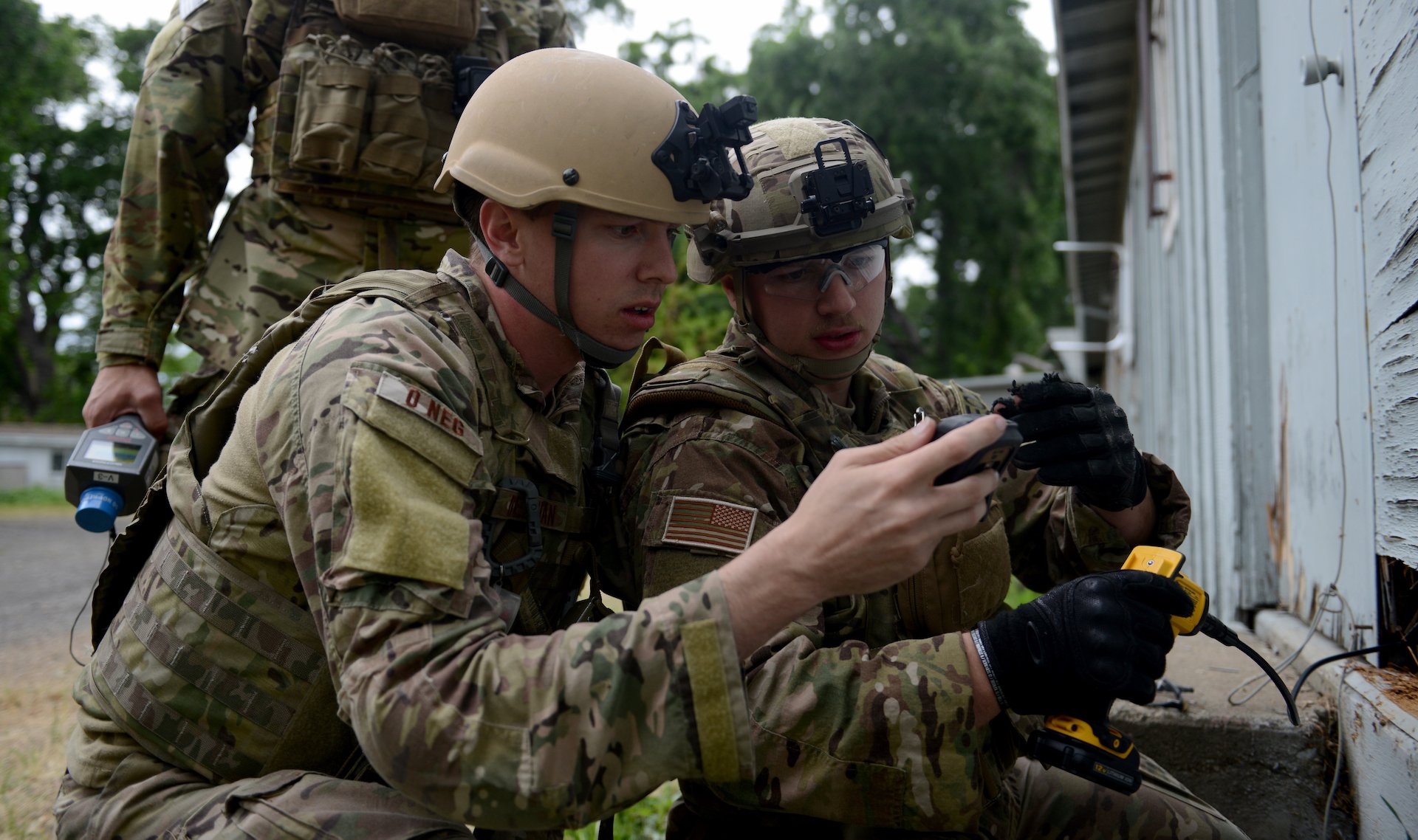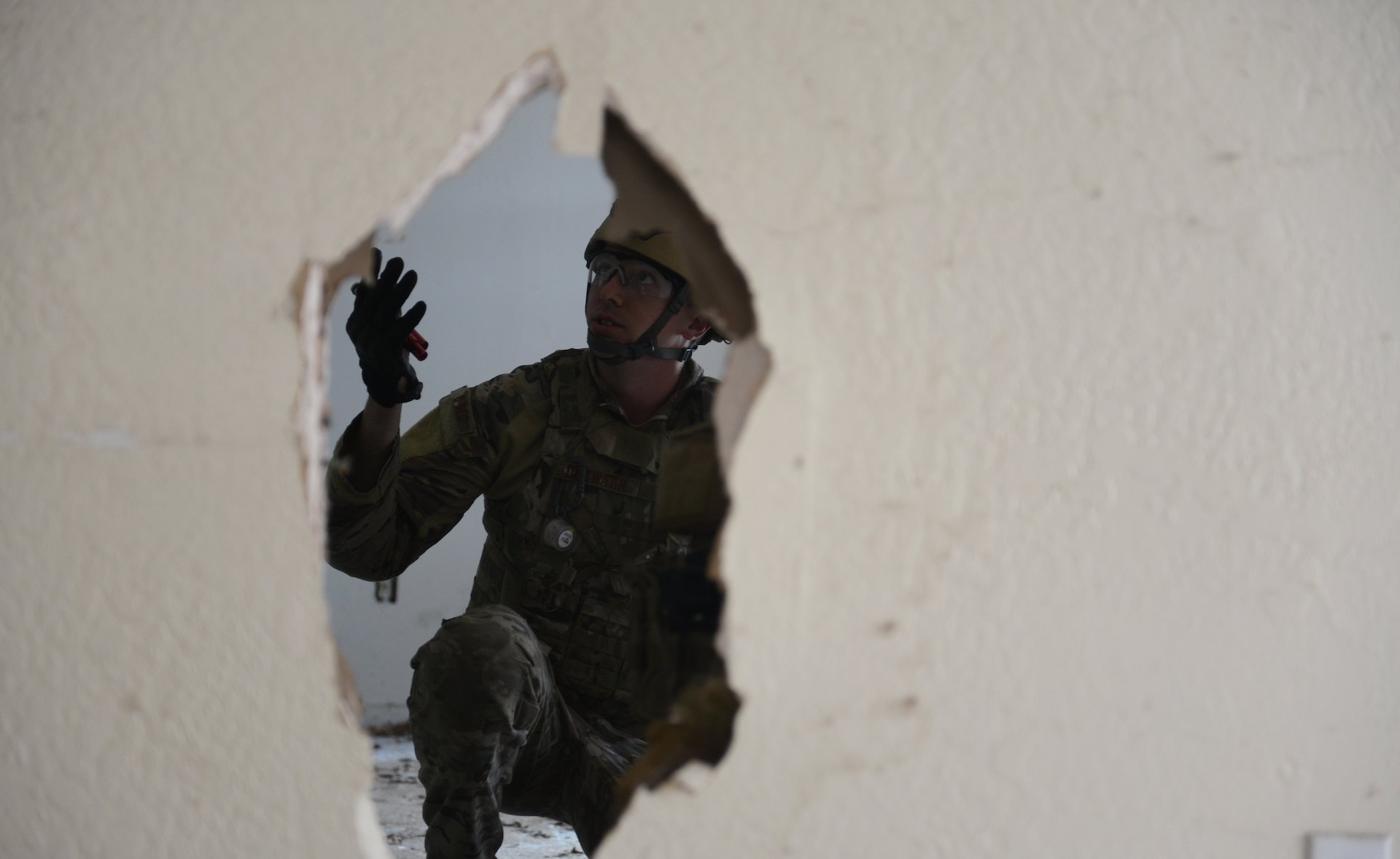Air Force EOD Tech Accused of Syria Insider Attack Faces Court Appearance

A 2016 picture of then-Staff Sgt. David Dezwaan, as he inspects the wiring of a simulated radioactive dispersal device at Clear Lake, California. Dezwaan was charged with planting explosives at a US base in Syria which injured four Americans. Air Force photo by Senior Airman Bobby Cummings.
An Air Force explosives expert charged with an insider attack on a US base in Syria will face an early court hearing Tuesday, Aug. 23, at Hill Air Force Base, Utah. David Dezwaan Jr. will face an Article 32 preliminary hearing for five charges of planting bombs at Mission Support Site Green Village, Syria, in April.
Dezwaan was the noncommissioned officer in charge of an explosive ordnance disposal unit at Hill. He faces five charges under the Uniform Code of Military Justice ranging from assault to access of a government computer with an unauthorized purpose.
The primary charges of assault relate to bombs the Air Force said he placed in April that exploded and resulted in traumatic brain injuries to three people.

Then-Staff Sgt. David Dezwaan, left, and Airman 1st Class Alex Nona at Clear Lake, California, in 2016. The EOD technicians participated in Operation: Half-Life, an exercise designed to evaluate a synchronized, multi-agency response to a crisis situation. US Air Force photo by Senior Airman Bobby Cummings.
The bombings on the US outpost in April were first ascribed to foreign fighters, but video surveillance and investigation of the devices pointed toward Dezwaan, government officials said. The bombs went off near an ammunition holding area and a shower facility, CNN reported.
An Article 32 hearing is the first step toward a court-martial in the military justice system but is not meant to determine guilt. The prosecution will present evidence of the allegation to an official known as a hearing officer. A defendant may also present witnesses and evidence, including alternate explanations of the crime.

Then-Staff Sgt. David Dezwaan attempts to enter a room with multiple simulated booby traps at Clear Lake, California, in 2016. US Air Force photo by Senior Airman Bobby Cummings.
The hearing officer will consider the evidence and determine whether a crime was committed and whether probable cause exists to continue to a court-martial.
Hearing officers usually return decisions on Article 32 hearings several weeks after the hearing. The officer will say whether they believe sufficient evidence exists for a court-martial, which a senior commander will then rule on.
Read Next: UCMJ Charges: EOD Tech Set Off Bombs on US Base in Syria

Lauren Coontz is a former staff writer for Coffee or Die Magazine. Beaches are preferred, but Lauren calls the Rocky Mountains of Utah home. You can usually find her in an art museum, at an archaeology site, or checking out local nightlife like drag shows and cocktail bars (gin is key). A student of history, Lauren is an Army veteran who worked all over the world and loves to travel to see the old stuff the history books only give a sentence to. She likes medium roast coffee and sometimes, like a sinner, adds sweet cream to it.
BRCC and Bad Moon Print Press team up for an exclusive, limited-edition T-shirt design!
BRCC partners with Team Room Design for an exclusive T-shirt release!
Thirty Seconds Out has partnered with BRCC for an exclusive shirt design invoking the God of Winter.
Lucas O'Hara of Grizzly Forge has teamed up with BRCC for a badass, exclusive Shirt Club T-shirt design featuring his most popular knife and tiomahawk.
Coffee or Die sits down with one of the graphic designers behind Black Rifle Coffee's signature look and vibe.
Biden will award the Medal of Honor to a Vietnam War Army helicopter pilot who risked his life to save a reconnaissance team from almost certain death.
Ever wonder how much Jack Mandaville would f*ck sh*t up if he went back in time? The American Revolution didn't even see him coming.
A nearly 200-year-old West Point time capsule that at first appeared to yield little more than dust contains hidden treasure, the US Military Academy said.












